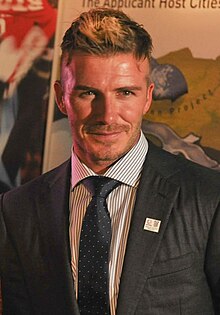
Cross-dressing is the act of wearing clothes traditionally or stereotypically associated with a different gender. From as early as pre-modern history, cross-dressing has been practiced in order to disguise, comfort, entertain, and express oneself.
Sissy, also sissy baby, sissy boy, sissy man, sissy pants, etc., is a pejorative term for a boy or man who does not demonstrate masculine traits, and shows possible signs of fragility. Generally, sissy implies a lack of courage, strength, athleticism, coordination, testosterone, male libido, and stoicism. A man might also be considered a sissy for being interested in typically feminine hobbies or employment, displaying effeminate behavior, being unathletic or being homosexual.

Masculinity is a set of attributes, behaviors, and roles associated with men and boys. Masculinity can be theoretically understood as socially constructed, and there is also evidence that some behaviors considered masculine are influenced by both cultural factors and biological factors. To what extent masculinity is biologically or socially influenced is subject to debate. It is distinct from the definition of the biological male sex, as anyone can exhibit masculine traits. Standards of masculinity vary across different cultures and historical periods.
Femme is a term traditionally used to describe a lesbian woman who exhibits a feminine identity or gender presentation. While commonly viewed as a lesbian term, alternate meanings of the word also exist with some non-lesbian individuals using the word, notably some gay men and bisexuals. Some non-binary and transgender individuals also identify as lesbians using this term.

Gaydar is a colloquialism referring to the intuitive ability of a person to assess others' sexual orientations as homosexual, bisexual or straight. Gaydar relies on verbal and nonverbal clues and LGBT stereotypes, including a sensitivity to social behaviors and mannerisms like body language, the tone of voice used by a person when speaking, overt rejections of traditional gender roles, a person's occupation, and grooming habits.
Effeminacy or male femininity is the embodiment of feminine traits in boys or men, particularly those considered untypical of men or masculinity. These traits include roles, stereotypes, behaviors, and appearances that are socially associated with women and girls. Throughout history, men considered effeminate have faced prejudice and discrimination. Gay men are often stereotyped as being effeminate, and vice versa. However, femininity, masculinity, and other forms of gender expression are independent of sexual orientation.
Mark Simpson is an English journalist, writer, and broadcaster specialising in popular culture, media, and masculinity. Simpson is the originator of the term and concept metrosexual. He has been described by one critic as "the skinhead Oscar Wilde".
Straight-acting is a term for LGBT individuals who do not exhibit the typical appearance or mannerisms of what is seen as stereotypically gay. Although the label is used by and reserved almost exclusively for gay and bisexual men, it may also be used to describe lesbian or bisexual women exhibiting a typically feminine appearance and mannerisms. Since the term invokes negative stereotypes of gay people, its application is often controversial and may cause offense.
A soft butch, or stem (stud-fem), is a lesbian who exhibits some stereotypical butch traits without fitting the masculine stereotype associated with butch lesbians. Soft butch is on the spectrum of butch, as are stone butch and masculine, whereas on the contrary, ultra fem, high femme, and lipstick lesbian are some labels on the spectrum of lesbians with a more prominent expression of femininity, also known as femmes. Soft butches have gender expressions of women, but primarily display masculine characteristics; soft butches predominantly express masculinity with a touch of femininity.
Hypermasculinity is a psychological and sociological term for the exaggeration of male stereotypical behavior, such as an emphasis on physical strength, aggression, and human male sexuality. In the field of clinical psychology, this term has been used ever since the publication of research by Donald L. Mosher and Mark Sirkin in 1984. Mosher and Sirkin operationally define hypermasculinity or the "macho personality" as consisting of three variables:
In gender studies, hegemonic masculinity is part of R. W. Connell's gender order theory, which recognizes multiple masculinities that vary across time, society, culture, and the individual. Hegemonic masculinity is defined as a practice that legitimizes men's dominant position in society and justifies the subordination of the common male population and women, and other marginalized ways of being a man. Conceptually, hegemonic masculinity proposes to explain how and why men maintain dominant social roles over women, and other gender identities, which are perceived as "feminine" in a given society.
LGBT linguistics is the study of language as used by members of LGBT communities. Related or synonymous terms include lavender linguistics, advanced by William Leap in the 1990s, which "encompass[es] a wide range of everyday language practices" in LGBT communities, and queer linguistics, which refers to the linguistic analysis concerning the effect of heteronormativity on expressing sexual identity through language. The former term derives from the longtime association of the color lavender with LGBT communities. "Language", in this context, may refer to any aspect of spoken or written linguistic practices, including speech patterns and pronunciation, use of certain vocabulary, and, in a few cases, an elaborate alternative lexicon such as Polari.

Queer heterosexuality is heterosexual practice or identity that is also controversially called queer. "Queer heterosexuality" is argued to consist of heterosexual, cisgender, and allosexual persons who show nontraditional gender expressions, or who adopt gender roles that differ from the hegemonic masculinity and femininity of their particular culture.
Androgyny is the possession of both masculine and feminine characteristics. Androgyny may be expressed with regard to biological sex, gender identity, or gender expression.

Marian Salzman is an American advertising and public relations executive. She is Senior Vice President, Global Communications for Philip Morris International, a tobacco company. She was formerly CEO of Havas PR North America and chaired the Global Collective, the organizing collaborative of all of the PR assets of Havas. She rejoined Euro RSCG in August 2009, having previously worked for the holding company as executive vice president, chief strategic officer, from January 2001 to October 2004.
Gender policing is the imposition or enforcement of normative gender expressions on an individual who is perceived as not adequately performing, through appearance or behavior, their gender or sex that was assigned to them at birth. According to Judith Butler, rejection of individuals who are non-normatively gendered is a component of creating one's own gender identity. Gender mainstreaming is a public policy concept, whereas gender policing is a more general social phenomenon.
Gender roles in non-heterosexual communities are a topic of much debate; some people believe traditional, heterosexual gender roles are often erroneously enforced on non-heterosexual relationships by means of heteronormative culture and attitudes towards these non-conformative relationships.

Femboy ( ), also spelled femboi, is a slang term for a male or non-binary individual who expresses themselves with traditionally feminine behaviours. As an internet aesthetic, this may be through the use of jewellery, wearing feminine clothing and makeup, or expressing feminine behavioural qualities. Femboy can be used as both a sexual and non-sexual term; it does not denote a specific sexual orientation or gender role, but instead marks a form of gender variance.
Spornosexual is a blend of sports and the clipping porno, compounded with sexual. The term was coined by Mark Simpson in 2014 to describe a man "who is influenced in his appearance by the stars of sport and pornography". It recognises young men who use "their toned bodies on social media as a means of feeling valuable in society." Jamie Hakim has described this as a "power-shift of a segment of society who have historically defined themselves through their mind, whilst at the same time defining those they have subordinated - such as women - through their bodies".

Technosexual is a term that circulated in media, fashion, and online outlets of the 2000s to describe a male that possesses a strong aesthetic sense and a love of technology.










